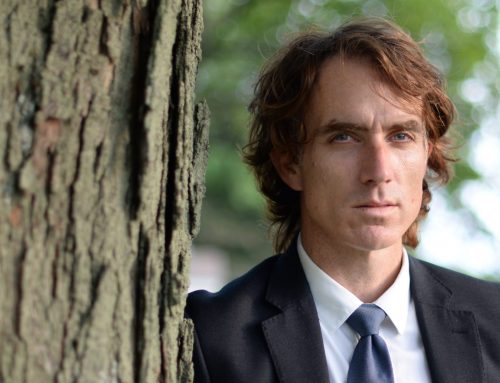The proceedings today featured a single witness, speaking to police uniforms, and also submissions from lawyers for the participants on gaps they identified in the evidence that has been presented so far dealing with firearms.
When the Mass Casualty Commission calendar showed that we would be hearing from a further witness on police uniforms, it seemed like a curious addition. We had already heard what seemed like more than enough coverage of that topic. The testimony from Corps Sgt. Maj. Al McCambridge certainly served to confirm that we had heard all we needed to about the topic. The most interesting part of his testimony was when he described his unique rank/title. He is the ‘middle of the hourglass’, in terms of the RCMP hierarchy, he testified.
The focus of the Corps Sergeant Major’s testimony (lead by Commission lawyer Rachel Young) was the deliberations of a working group on RCMP uniforms, how they address requests from officers for new uniforms or to keep theirs after retirement. McCambridge had a habit of answering questions in a way that I always found annoying as a lawyer, and I know judges sometimes find a nuisance as well. He would look at the lawyer when the question was asked, then turn to his right to answer the question to the Commissioners. Lawyers feel marginalized or ignored, and judges feel they have to keep eye contact with the witness rather than making notes or reviewing documents as they are listening. It is not an uncommon way for officers to testify, sometimes deliberately so if they do not like the lawyer.
Next the MCC took a break so that the lawyers for the participants could meet and determine what questions, if any, they had for the witness. This process is highly problematic. There is no reason why an MCC lawyer should be involved in any way in this meeting. As I understand it, the lawyers for the participants need to have their topics and questions approved in advance before they can ask the questions.
I would like to see this requirement challenged be lawyers during questioning, asking ‘unapproved’ questions to see what happens. That would expose this improper restriction on cross examination to the public, and force the MCC to explain why they are doing things this way, or else relent and allow more open questioning.
Cross examination questions today were asked by Natasha Schigas from Patterson Law. I worked with Ms. Schigas when she articled at Mac Mac & Mac while I was there in 2019. We did not work closely together, but she was a highly regarded young litigator at that time, and showed some of that competence today, even on a quite dry topic.
Another news item that caught my eye was a report from Paul Palango in Frank Magazine regarding the video of the killer’s final moments at the Big Stop which has not been disclosed or played publicly. The videos from the Big Stop which were provided to the media were done so on the condition they not be used, and that they be destroyed after viewing. It is absurd that the best possible evidence of a key moment is not being used, yet this is where we stand. David Hutt, a media lawyer acting for Frank Magazine, has made an application to the MCC to have standing to argue for the video to be disclosed.
Given the comments in the MCC’s Interim Report about the lawyers for the Commission having roles equivalent or at least similar to those of Crown Prosecutors (that is to say they are obligated to seek justice, and not victories or convictions) we should be able to expect that these lawyers would support Frank Magazine’s application. The only possible reason for opposing the disclosure of this video is that it may undermine the heroic narrative that has been presented, and that should not be a consideration of the Commission. If the MCC feels the video is too traumatic to show publicly, that would not prevent them from disclosing it to the parties.
One final piece of news broke in the afternoon, that James Banfield, brother to Lisa Banfield, has had his criminal charges referred to Restorative Justice. James Banfield had been charged, along with Ms. Banfield and Brian Brewster, with supplying ammunition to the perpetrator. James Banfield had already plead guilty to the charge, which is not a barrier to Restorative Justice, and it is entirely appropriate to have consistent treatment of those with the same charges.
Back to the proceedings, the afternoon portion of the day was used to allow lawyers for the parties to critique and identify gaps in the firearms-related evidence. The parties are seeking further analysis of the expert reports, more details on the evidence of Brenda Forbes and Cst. Wiley, and reiterating the importance of hearing from Ms. Banfield. Firearms organizations had a chance to speak, and made the (fairly predictable) point that the killer did not legally possess firearms and that thus (in their view) restrictions and regulations are ineffective in preventing criminal activity.
Suzan Fraser from the Coalition for Gun Control made a few remarks as well. This was her first time speaking, and her fresh perspective was valuable in reminding us that the level of participation the parties are entitled to enjoy is low. She noted that participants were not permitted to ask questions of those who were involved in the roundtable held last week. She also noted that the friendship of the killer and Cst. Wiley may have made it difficult for those who knew of the killer’s illegal guns to report him to the police. We will need to hear from Cst. Wiley.
Tomorrow’s proceedings will feature key RCMP witnesses Terry Brown, Dave Melanson, Iain Fahie, and Duane Ivany, and will bring us back to the Onslow-Belmont Fire Hall and the death of Heather O’Brien.

